My first attempt at tuning a cigar box guitar was a combination of curiosity and mild bewilderment. While seated on my porch, the raw, unvarnished timbre of this handmade instrument—assembled from a simple cigar box and a few strings—proved captivating. Yet, I quickly realized that, unlike conventional guitars, the approach to tuning a cigar box guitar requires both flexibility and a deep understanding of the instrument’s unique acoustics. Having spent years as an acoustic fingerstyle player and builder, I have seen firsthand that tuning choices are central to unlocking a cigar box guitar’s sonic potential. For those just starting out, it’s not enough to learn mechanical procedures; to progress, one must also internalize the subtleties and quirks that influence both tone and playability. Drawing on these experiences, this article shares the practical insights, common pitfalls, and nuanced methods that distinguish expert cigar box guitar setup.
What Is Cigar Box Guitar Tuning?
Exploring Different Tunings: Standard, Open, and Custom
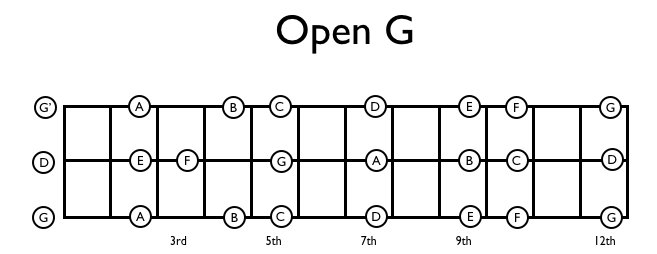
Experimenting with tuning systems is foundational to defining the cigar box guitar’s personality. According to historical accounts, many legendary blues artists, including Robert Johnson, relied heavily on open tunings when performing on makeshift stringed instruments. Open G is especially popular for its favorable intervals and ease of slide playing, making it accessible for blues and folk alike. Meanwhile, custom tunings—such as DGBD or modal variations—allow advanced players to create highly individualized sound palettes, often used in modern experimental or world-music contexts. Practical considerations, such as string tension and box resonance, should not be overlooked; proper tension not only prevents string breakage but also ensures optimal playability. Varying from standard to open to custom tunings thus enables both sonic diversity and technical adaptability.
How Cigar Box Guitar Tuning Differs from Standard Guitars
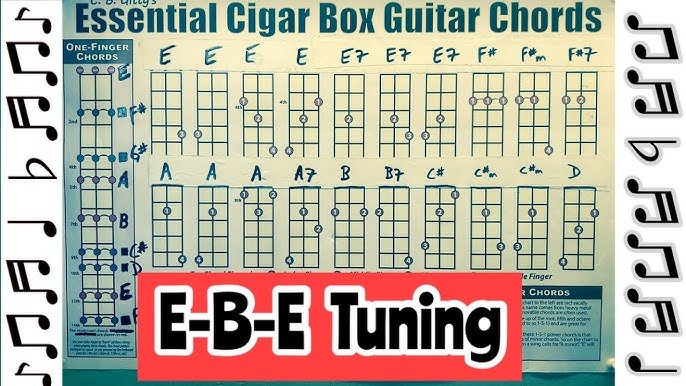
Cigar box guitars depart fundamentally from the conventions of standard Western guitar tuning. Most 6-string guitars adhere to EADGBE tuning, designed to maximize harmonic possibilities and familiarity. In contrast, cigar box instruments, often with three or four strings, utilize altered arrangements like open G or open C not only for simplicity but also to accentuate resonance and facilitate certain styles—particularly slide. The construction of cigar box guitars also heavily affects the efficacy and stability of tunings: inconsistencies in neck angle, nut height, and box material can greatly influence the ease of maintaining pitch. For many, this results in a learning curve but also an opportunity for expressive growth. Accepting these differences invites a more creative approach, as open and custom tunings become tools for self-expression rather than constraints.
Why Tuning Matters for Cigar Box Guitars
The Impact on Playability and Tone

Both the tactile feel and the resulting tonal character of a cigar box guitar are determined in large part by the chosen tuning, as string tension and intervallic relationships control vibrational energy and response. Research shows that even small changes (5-10% increase or decrease) in string tension can account for perceivable shifts in attack and sustain, impacting dynamic nuance as well as projection (Menchey Music, 2023). For instance, reducing tension can make fretting easier but at the cost of clarity or sustain, while excessive tightening may strain both the instrument and the player’s hand, leading to unwanted tonal imbalances. Through consistent experimentation, I’ve found that optimizing tuning directly elevates musical expressiveness, yet it comes with the responsibility to continually monitor and correct drift—since cigar box guitars are inherently less consistent than commercial standard guitars.
Suiting the Style: Slide, Blues, and Folk
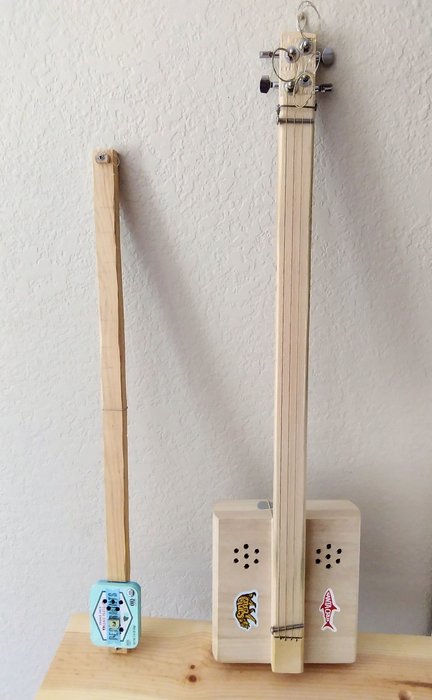
The selection of tuning should be strongly guided by the intended musical style, as certain tunings are tightly linked with the tradition they serve. For slide blues, open G remains a dominant choice due to its compatibility with bottleneck slides and the straightforward architecture of chord shapes. Scholarly resources on open tunings for slide guitar detail how altered tunings allow seamless drone effects and simplified melody picking. For folk contexts, modal or open D tunings often replicate the drone and melodic tendencies characteristic of the style. But versatility comes with limitations: a tuning optimized for slide may obscure access to more complex chords, while highly customized tunings can inhibit collaboration with standard-tuned musicians. Still, tuning remains the “critical link,” as highlighted in educational guides on instrument tuning, between a performer’s desired sound and the listener’s perception of musical authenticity.
Who Should Use Each Tuning? Choosing the Right Setup
Recommended Tunings for Beginners
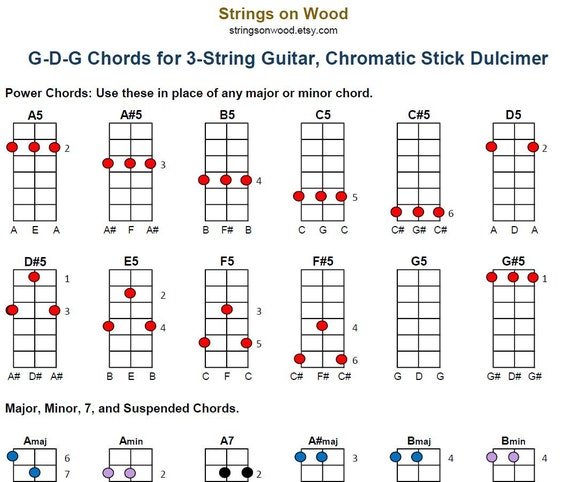
For newcomers, open G tuning (GDG) is widely recognized as an ideal starting point. This is not merely anecdotal: open G is repeatedly highlighted in instructionals as providing the shortest learning curve for playing basic triads, single-finger barres, and familiar blues patterns (Acoustic Guitar). It allows even absolute beginners to produce full-bodied chords, and its framework underpins much of the standard cigar box repertoire. However, it’s worth noting that open G does not offer the chordal variety and nuanced progressions of standard tuning. For those wishing to branch into jazz or classical idioms eventually, supplementing their studies with other tunings is advisable. Still, for grounding in blues and folk, open G offers accessibility and accomplishment.
Intermediate and Custom Options
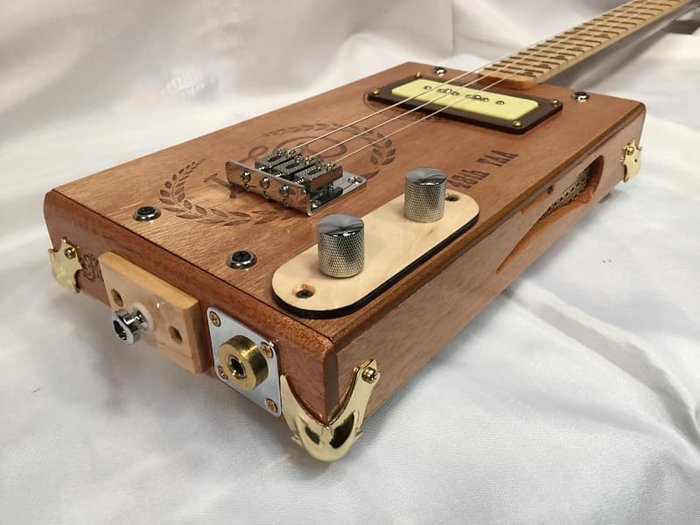
Progressing to intermediate or advanced levels brings with it a broader palette. Discoveries such as DGBD or even modal tunings (like DAD or DADG) can dramatically heighten the complexity and sonic identity of a cigar box guitar (Oxford Academic). These options are favored by musicians who seek signature sounds or who wish to tailor their instruments to specific song structures. Still, one should weigh the increased creative flexibility against the greater technical challenges and steeper learning curve such tunings present, especially in group or performance settings where standardization aids communication. Even so, for soloists or composers, custom tunings foster experimentation and push the boundaries of what’s possible on these compact, soulful instruments.
When and How to Tune: Methods and Timing
Step-by-Step Guide: Tuning a Cigar Box Guitar
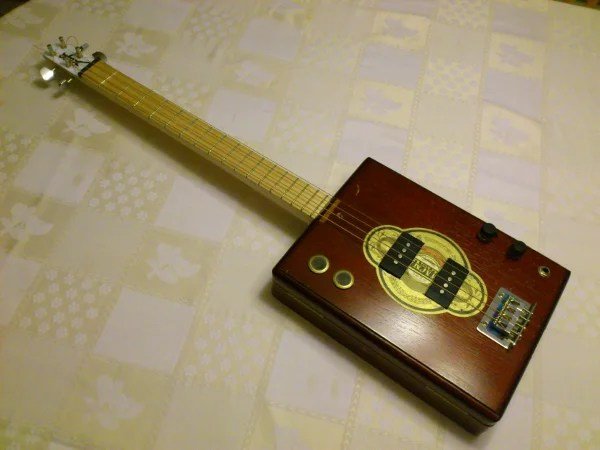
Sustainable tuning must be methodical and rooted in both ear and technology. My recommended approach is as follows:
- Begin by ensuring fresh strings are properly seated, to minimize initial stretching that can cause instability.
- Use a chromatic tuner or a reliable tuning app to set the target pitches. Tune up from flat, not down, to increase tuning stability by properly seating the string in the nut and bridge slots.
- After reaching pitch, gently stretch the strings by hand, then re-check tuning.
- Verify pitch across the fretboard by listening for true harmonics, which can reveal subtle intonation issues that simple tuners may not catch.
Adhering to this detailed process helps safeguard both tone and instrument longevity. It may seem laborious initially, but the resulting playability and confidence far outweigh the effort invested.
Checking and Maintaining Tuning Stability

Long-term stability is a serious challenge, especially for hand-built or weather-exposed cigar box guitars. Humidity shifts and string age are persistent, albeit invisible, disruptors to intonation and tuning; room humidity changes as small as 15% can alter string tension enough to render precise tuning moot. I recommend players check tuning before every session, and periodically assess the physical state of strings and tuning machines. When noticing tuning drift, change strings at least every few months (or more, for frequent players), and store the instrument in a stable, climate-controlled environment when possible. Awareness of these environmental and mechanical factors can extend tuning stability and improve the consistency of acoustic output—a key consideration for recording or live scenarios.
Where to Find and Use Popular Tunings
Common Open Tunings in Use

Among cigar box aficionados, a handful of open tunings recur for their versatility and ease of adaptation. Most widespread are open G (GDG) and EBE; both provide simple root-fifth-root structures well suited to blues riffs and slide work. Open G facilitates expressive slide technique, while EBE is prized for unusually resonant bass and crystal-clear harmonics (Guitar Player). However, despite their accessibility, these tunings can limit harmonic spectrum: fingering extended chords is more challenging, and arranging polyphonic music can be restrictive. For players focused on roots and traditional material, however, these are well-established foundations.
Exotic & Niche Tunings for Creative Players
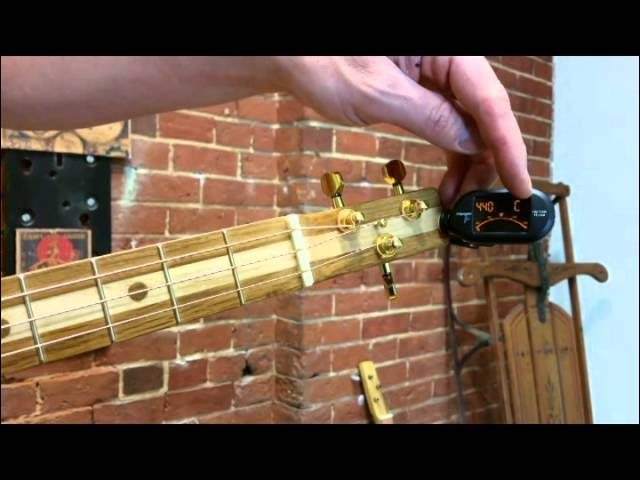
For guitarists eager to expand their tonal vocabulary, rare tunings offer an avenue for novelty and inventiveness. Tunings such as Brazilian DGBD, or even more exotic intervals, produce distinctive voicings and harmonic overtones not typically accessible with open G or EBE. These options have grown in popularity among experimental musicians and composers searching for unique textures—sometimes even crossing into non-Western musical idioms. Yet, mastering such tunings can require relearning chord shapes, reconsidering right- and left-hand technique, and accepting that standard resources (tab, notation) may be scarce. The benefit is a highly personalized sound, but the barrier to entry is necessarily higher, particularly for collaborative or performance settings.
FAQs: Cigar Box Guitar Tuning Questions Answered
What are the key differences in tuning cigar box guitars compared to traditional guitars?
What common mistakes should I avoid when tuning a cigar box guitar?
What are some recommended tuning setups for cigar box guitars?
How can I enhance the sound quality of my tuned cigar box guitar?
Conclusion: Final Thoughts from the Workbench
Each time I tune, I find new opportunities for both invention and learning—missteps often yield unexpected inspiration. Having observed and experimented from humble beginnings to more advanced builds, I value patience, flexibility, and systematic experimentation above all. The journey with cigar box guitar tuning is seldom predictable, but embracing the unexpected is often what leads to the most authentic musical expression. Approach tuning both as craft and artistic dialogue: the investment of care and openness to discovery will always be rewarded with richer tone and deeper personal resonance.